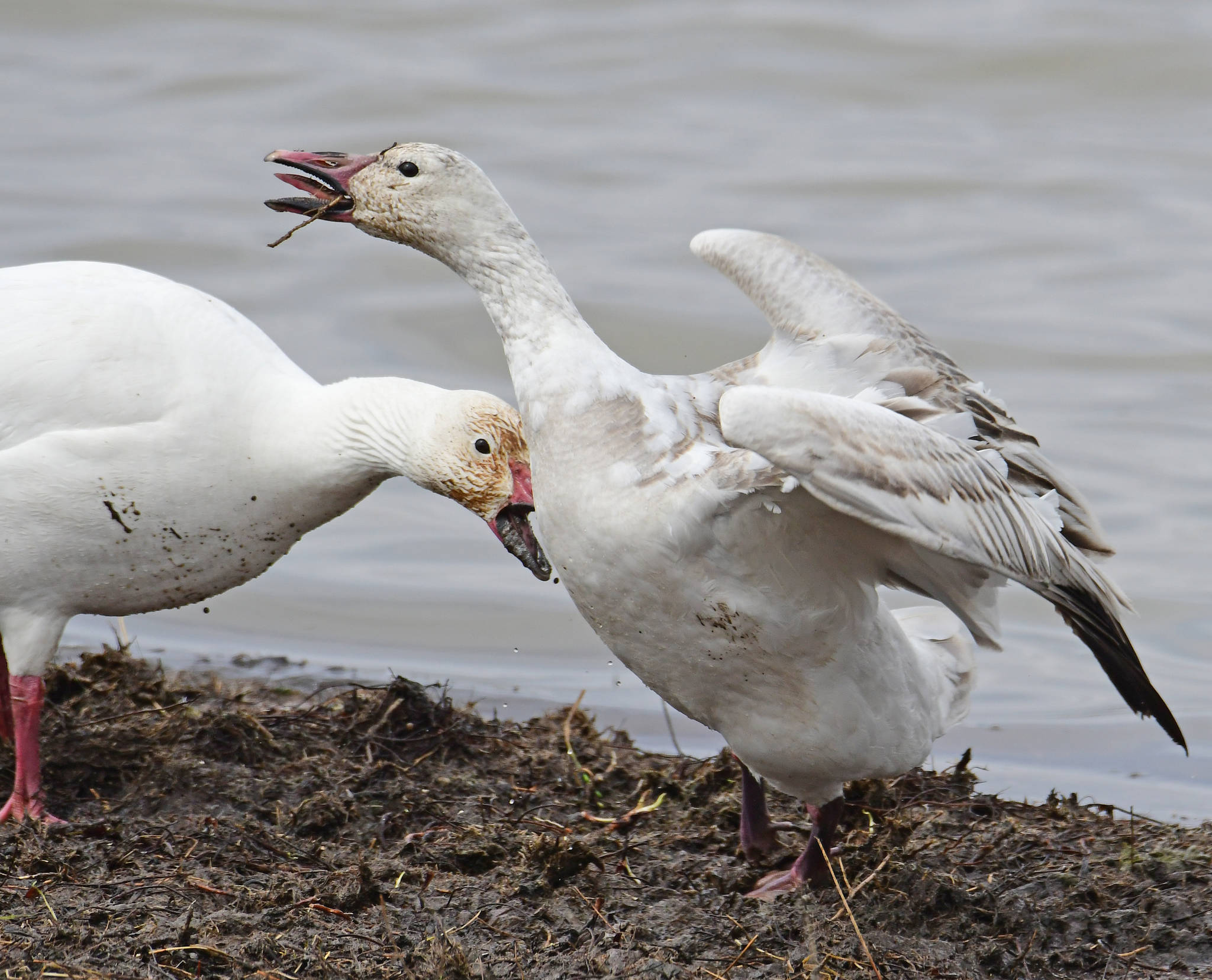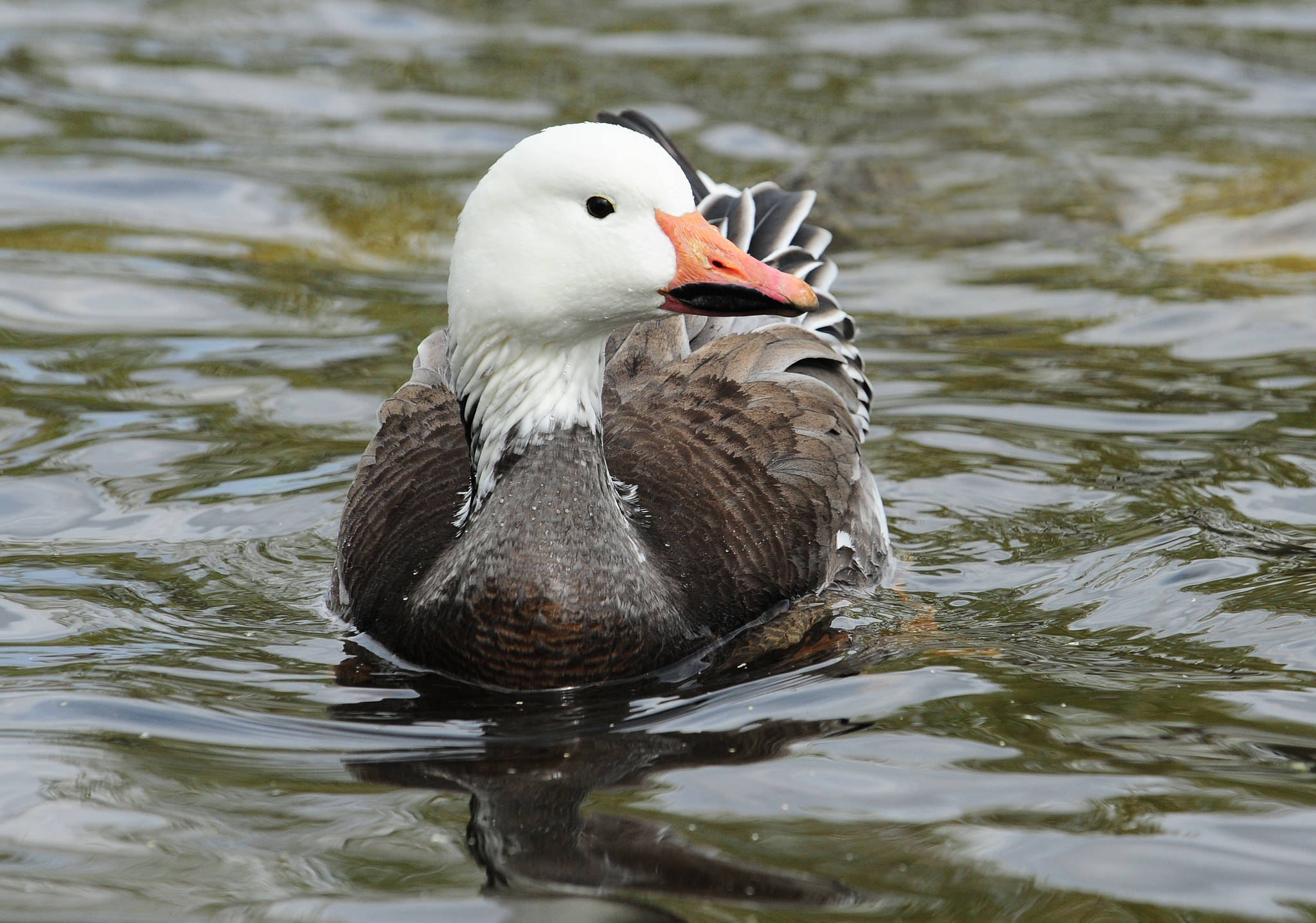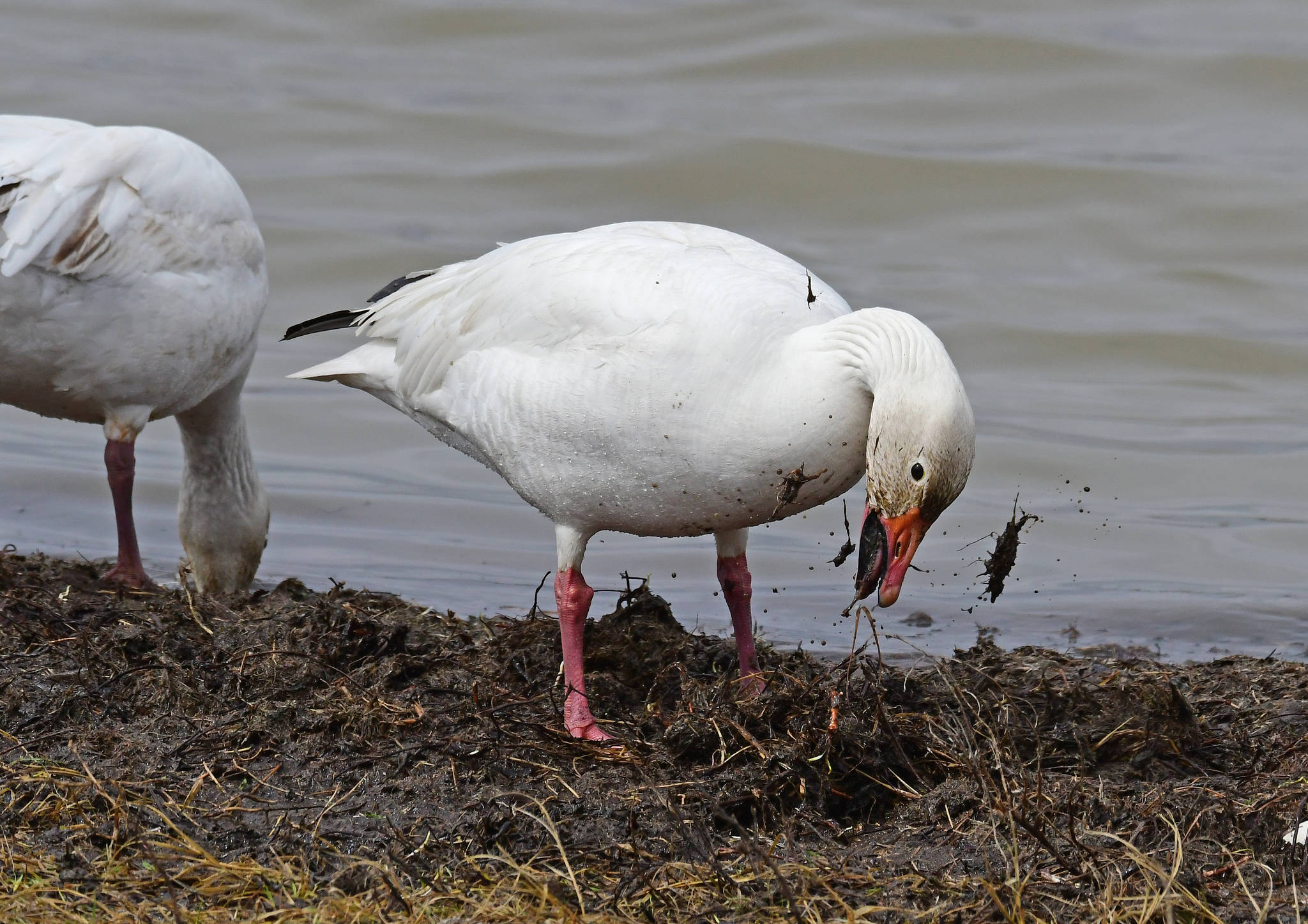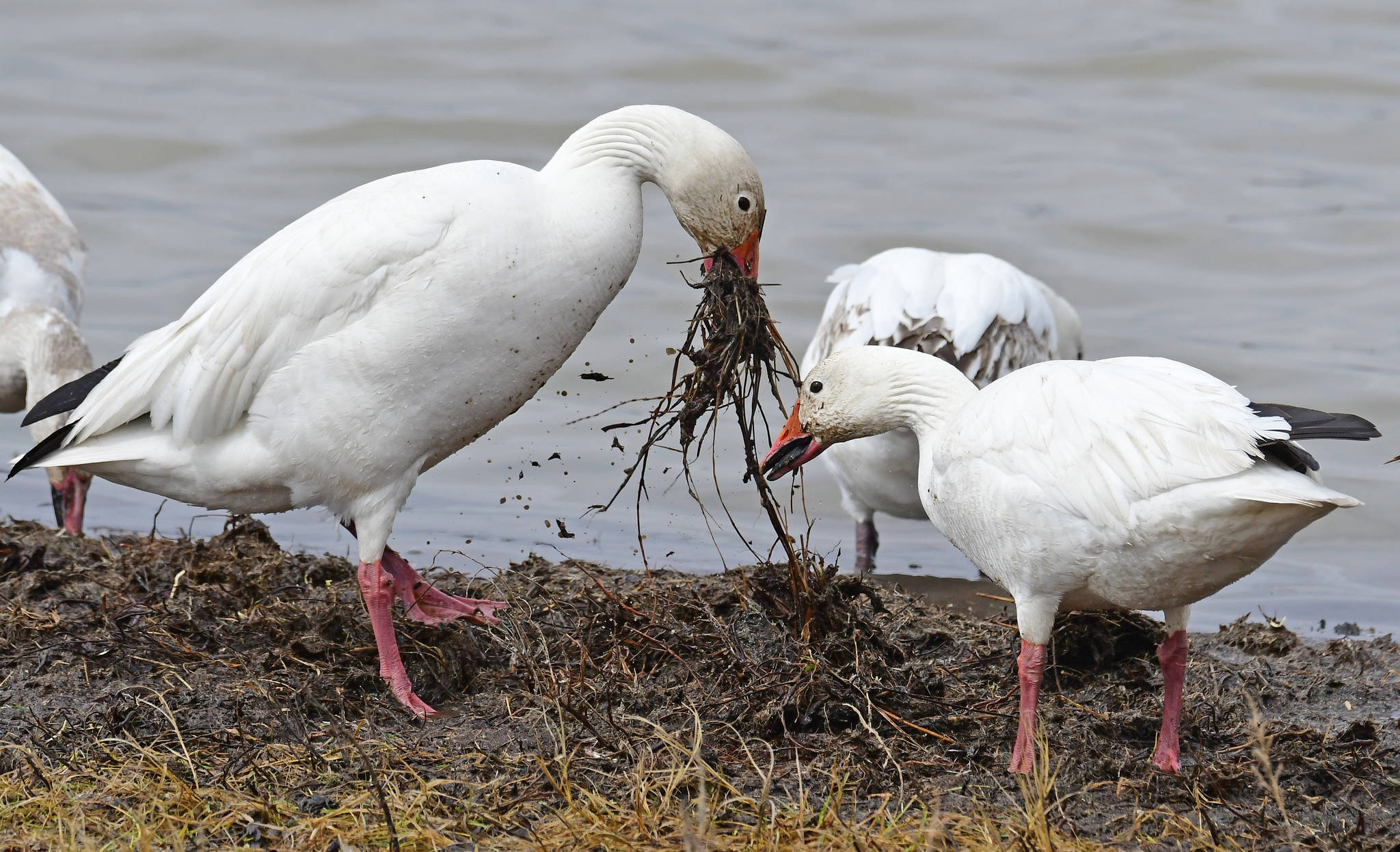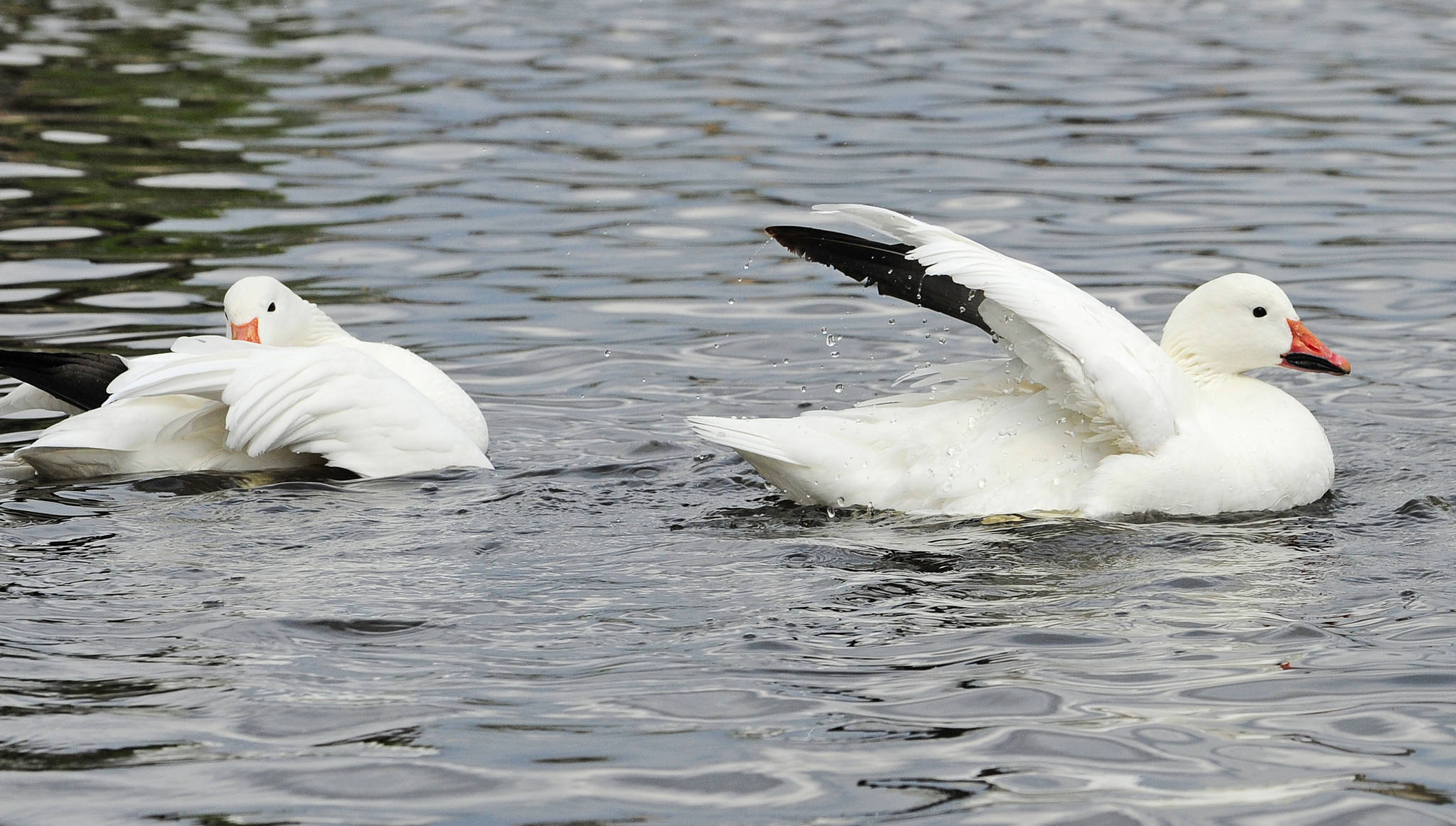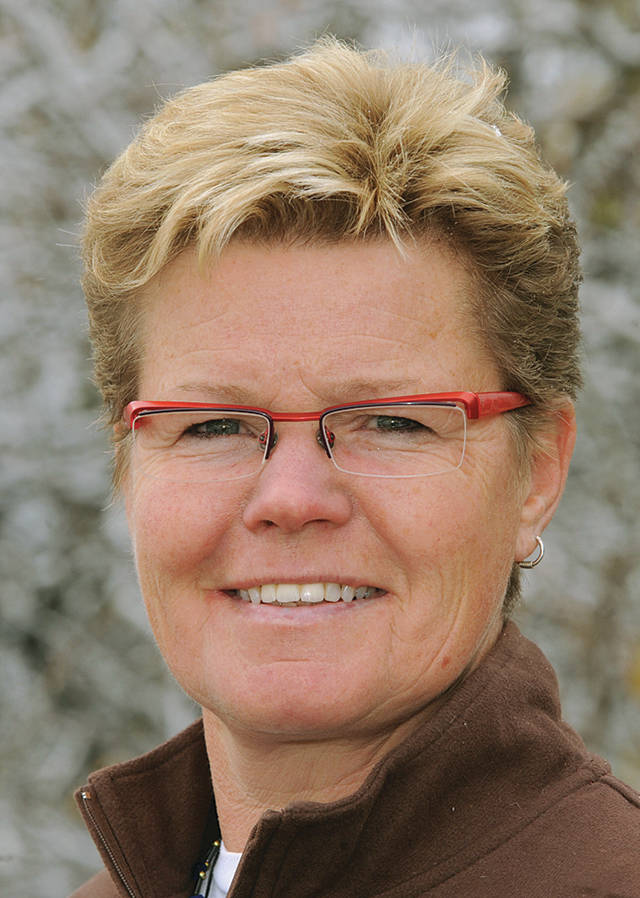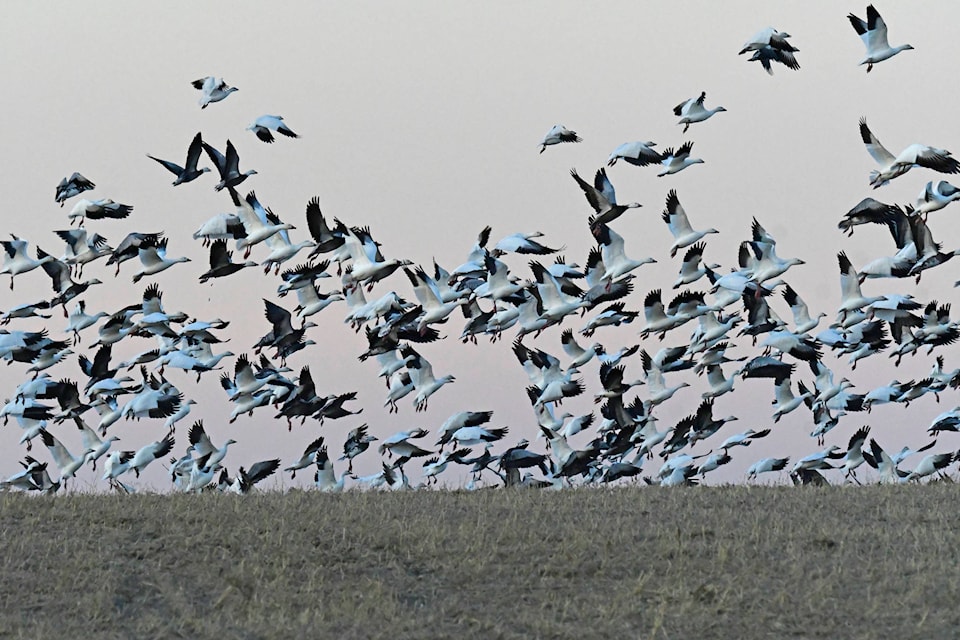Fall is a wonderful time to witness one of nature’s many spectacles — the mass southerly migration of geese through the Canadian Prairies.
While most of us are familiar with Canada geese (some populations are resident, while others are migratory), two other goose species also move through the province in large numbers during fall migration: snow geese and greater white-fronted geese.
Sometimes, they travel in single-species flocks; other times, two or three species will journey together.
Snow geese occur in two forms, the white-coloured light morphs and the blue-grey dark morphs.
Since most individuals in any population are the white morphs, flocks of snow geese are easy to identify as they dazzle against a blue sky or sparkle amidst the subdued palette of a harvested field.
Unlike Canada geese, which travel in classic “V” formation, snow geese travel in oscillating, loosely formed lines.
Snow geese breed across the Arctic tundra. All three populations (western, mid-continent and eastern) were so low in the early-1900s they were given protected status.
Today, their populations have rebounded to such high numbers they are actually causing severe habitat destruction across their breeding grounds. Hunting quotas have been increased in an effort to curb the population explosion.
When it is time to migrate, each snow goose population follows its own specific migration route, heading mostly due south from the breeding grounds to wintering sites at approximately the same longitude. The birds fly quickly and at high altitudes, making long stopovers at various staging areas along the way.
While resting on water, snow geese will often bunch together to create a large flotilla. Last week, near Saskatoon, Sask., we saw one flotilla of approximately 30,000 birds.
When a bald eagle suddenly appeared over a nearby ridge, the entire flock lifted off in a cacophonous cloud. They circled noisily overhead before arcing back down to the water to create another raucous avian armada.
Like most wild birds, snow geese are too wary to allow close approach. However, a couple of autumns ago, a friend and I were fortunate to encounter a small group of snow geese feeding in a wet roadside ditch.
Using my vehicle as a blind, I was able to watch and photograph them at close range. We were amazed at how viciously they squabbled with each other and how voraciously they prodded the shoreline muck with their massive beaks.
I later learned this dining behaviour – called grubbing – is how they access the nutritious and fibrous rhizomes of various aquatic plant species.
Interestingly, I also learned food passes through a snow goose’s digestive tract in only an hour or two, resulting in them expelling six to 15 droppings per hour!
I am still trying to get good photos of greater white-fronted geese. When I get enough suitable images, I will do a future column about these abundant and interesting snow goose cousins.
Myrna Pearman is the biologist and site services manager at Ellis Bird Farm. She can be reached at mpearman@ellisbirdfarm.ca.
